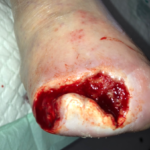
Dr. Robert Klein completed podiatric medical school in Chicago at the Rosalind Franklin University of Medicine and Science, Scholl College of Podiatric Medicine. Dr. Klein continued his surgical training as the Chief Resident at Michigan Health Center in Detroit. Dr. Klein is a Clinical Assistant Professor in the Department of Surgery at the University of South Carolina School of Medicine (USCSOM) Greenville and specializes in wound care, limb preservation, and surgery.
Klein_Current Dialogues in Wound Management_2019_Volume 5_Issue 2
INTRODUCTION
Chronic, long-standing wounds can be difficult to heal; oftentimes, requiring multiple advanced wound care modalities to achieve closure. Wounds with tunneling and undermining further complicate and/ordelay the healing process. Proper wound bed preparation is an essential component to wound healing.1-4 Sharp debridement along with advanced wound care modalities, including the use of PROMOGRAN PRISMA™ Rope Matrix, can aid in reducing tunneling and undermining, as well as promoting the formation of granulation tissue and wound healing.
CASE REPORT
A 76-year-old diabetic female with a chronic Wagner Grade 3 diabetic foot ulceration of her right forefoot underwent a trans-metatarsal amputation (TMA). The patient developed wound dehiscence post-operatively. Her general surgeon recommended a below knee amputation (BKA), which the patient declined. Comorbid medical conditions included poorly controlled Type II diabetes with insulin use, peripheral arterial disease requiring endovascular intervention, obesity, cerebrovascular accident, and peripheral neuropathy.
The patient was referred to the author by her vascular surgeon to aid in closure of her wound and for limb preservation. The patient presented with an extensive chronic, non-healing wound at her trans-metatarsal site with slough, necrotic, and devitalized tissue that extended down to and included exposed bone(Fig 1)
A multi-disciplinary team approach was used including podiatry/wound care, internal medicine, a diabetes educator, a physical therapist, and infectious disease specialists as part of her medical and surgical team. The patient’s diabetes was poorly controlled, in part to her non-compliance; efforts to improve patient compliance included extensive counseling with the patient and her family regarding the morbidity and mortality associated with diabetes and diabetic related foot disease. The patient was advised that, in addition to the specialists attending to her medical and surgical needs, she was an integral part of the wound healing team.
Plain film and magnetic resonance imaging (MRI) findings were suggestive for chronic osteomyelitis at her TMA site. A peripherally inserted central catheter line was inserted, and the patient received intravenous antibiotics for a period of six weeks. Hyperbaric oxygen therapy (HBOT) was used as adjuvant therapy to treat her underlying bone infection with 42 HBOT treatments. The wound underwent sharp debridement to remove necrotic and devitalized tissue, as well as to remove exposed bone (Figure 2)
The patient’s wound was extensive, and a decision was made to utilize negative pressure wound therapy (NPWT) to promote granulation tissue and to draw the wound edges closer together.5 In order to protect the fragile structures in the wound, a meshed non-adherent contact layer dressing was applied over the wound. V.A.C.® Therapy at -125 mm Hg was started. The V.A.C.® GRANUFOAM™ Dressing was cut to fit the wound bed area and was bridged to her lower leg (Figure 3). V.A.C.® Therapy was utilized for 56 days, with dressing changes every 2-3 days. The patient remained non-weight bearing using a wheelchair and then a knee rest walker to minimize pressure on the wound and her foot. The physical therapy team was consulted for gait training to minimize the risk of a fall and to prevent deconditioning.
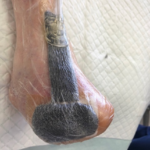 Figure 3. Application of V.A.C.® Therapy using V.A.C.® GRANUFOAM™ Dressing.
Figure 3. Application of V.A.C.® Therapy using V.A.C.® GRANUFOAM™ Dressing.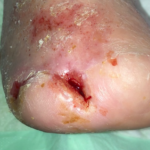 Figure 4. Deep tunneling observed at the TMA site.
Figure 4. Deep tunneling observed at the TMA site.
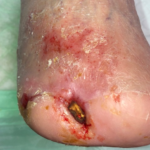 Figure 5. Application of PROMOGAN PRISMA™ Rope Matrix.
Figure 5. Application of PROMOGAN PRISMA™ Rope Matrix.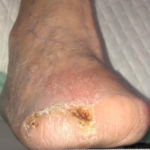 Figure 6. Wound fully closed after 28 days of PROMOGRAN PRISMA™ Rope Matrix use.
Figure 6. Wound fully closed after 28 days of PROMOGRAN PRISMA™ Rope Matrix use.
The wound responded exceptionally well with debridement and NPWT. Healthy granulation developed and the wound edges advanced towards one another. A deep wound in the mid portion of her TMA site was present. The wound tunneled 1.2 cm into the deeper soft tissues (Figure 4).
A decision was made to discontinue V.A.C.® Therapy and use the PROMOGRAN PRISMA™ Rope Matrix to address the deep tunneling. The wound was prepped, sharply debrided, irrigated, and the PROMOGRAN PRISMA™ Rope Matrix was applied to the wound per the manufacturer’s instructions for use (Figure 5). After 28 days of PROMOGRAN PRISMA™ Rope Matrix use, the tunneling resolved and the wound was completely closed (Figure 6). Once the wound was closed, the patient was fitted with custom diabetic insoles with an amputation fill for her right foot along with extra-depth diabetic inlay shoes. The patient averted a below knee amputation, and to date remains ambulatory.
DISCUSSION
Diabetic ulcerations, surgical wounds, and wound dehiscence can all develop tunneling and undermining. Tunneling and wounds with undermining are challenging problems to address. In this case study, the author successfully closed a complex diabetic foot wound status post trans-metatarsal amputation with wound dehiscence and with tunneling with the PROMOGRAN PRISMA™ Rope Matrix. A below knee amputation was averted.
References
1.Gupta S, Andersen C, Black J et al. Management of Chronic Wounds: Diagnosis, Preparation, Treatment, and Follow-up. Wounds 2017;29(9):S19-S36.
2.Frykberg RG, Banks J. Challenges in the Treatment of Chronic Wounds. Adv Wound Care 2015;4(9):560-582. doi:10.1089/wound.2015.0635.
3.Snyder RJ, Fife C, Moore Z. Components and Quality Measures of DIME (Devitalized Tissue, Infection/Inflammation, Moisture Balance, and Edge Preparation) in Wound Care. Adv Skin Wound Care 2016;29(5):205-215. doi:10.1097/01.ASW.0000482354.01988.b4.
4.Schultz GS, Sibbald RG, Falanga V et al. Wound bed preparation: a systematic approach to wound management. Wound Repair Regen 2003;11(2 Suppl):S1-S28.
5.Langer V, Bhandari PS, Rajagopalan S, Mukherjee MK. Negative pressure wound therapy as an adjunct in healing of chronic wounds. Int Wound J 2015;12(4):436442. doi:10.1111/iwj.12132.
Photos and patient information courtesy of Robert Klein, DPM, FACFAS, CWS, Collom & Carney Clinic Association, Texarkana, TX.As with any case study, the results and outcomes should not be interpreted as a guarantee or warranty of similar results. Individual results may vary depending on the patient’s circumstances and condition.NOTE: Specific indications, contraindications, warnings, precautions, and safety information may exist for Systagenix and KCI (Acelity companies) products. Please consult a healthcare provider and production instructions for us prior to application. .


